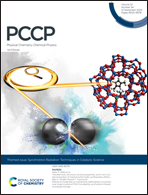Theoretical model for predicting thermoelectric properties of tin chalcogenides
Abstract
The global energy crisis demands the search for new materials for efficient thermoelectric energy conversion. Theoretical predictive modelling with experiments can expedite the global search of novel and ecoconscious thermoelectric materials. The efficiency of thermoelectric materials depends upon the thermoelectric figure of merit (ZT). In this perspective, we discuss the theoretical model to calculate thermoelectric properties. Different scattering mechanisms of electrons and phonons are calculated using a simple model for the fast prediction of thermoelectric properties. Thermoelectric properties based on the simple model have shown more than 90% agreement with the experimental values. Possibility to optimize the figure of merit by alloying, defects, nanostructuring and band convergence is also discussed for layered chalcogenides of tin. In the case of doped materials, ion-impurity scattering is found to be dominating over electron–phonon scattering and the power factor can be optimized by tuning the former scattering rate. For phonon transport, alloy scattering is found to be the most dominating among all other scattering mechanisms. Theoretically, it is found that in the temperature range between 300 K and 800 K, SnSe0.70S0.30 has the highest ZT with an efficiency of 17.20% with respect to Carnot efficiency. There could be 53.8% enhancement of the device efficiency in SnSe0.70S0.30 compared to experimentally reported SnSe0.50S0.50 in the medium temperature range (300 K to 800 K). Possible routes to achieve the best ZT in the medium temperature range are also discussed in this perspective.

- This article is part of the themed collections: PCCP Emerging Investigators and 2020 PCCP HOT Articles


 Please wait while we load your content...
Please wait while we load your content...